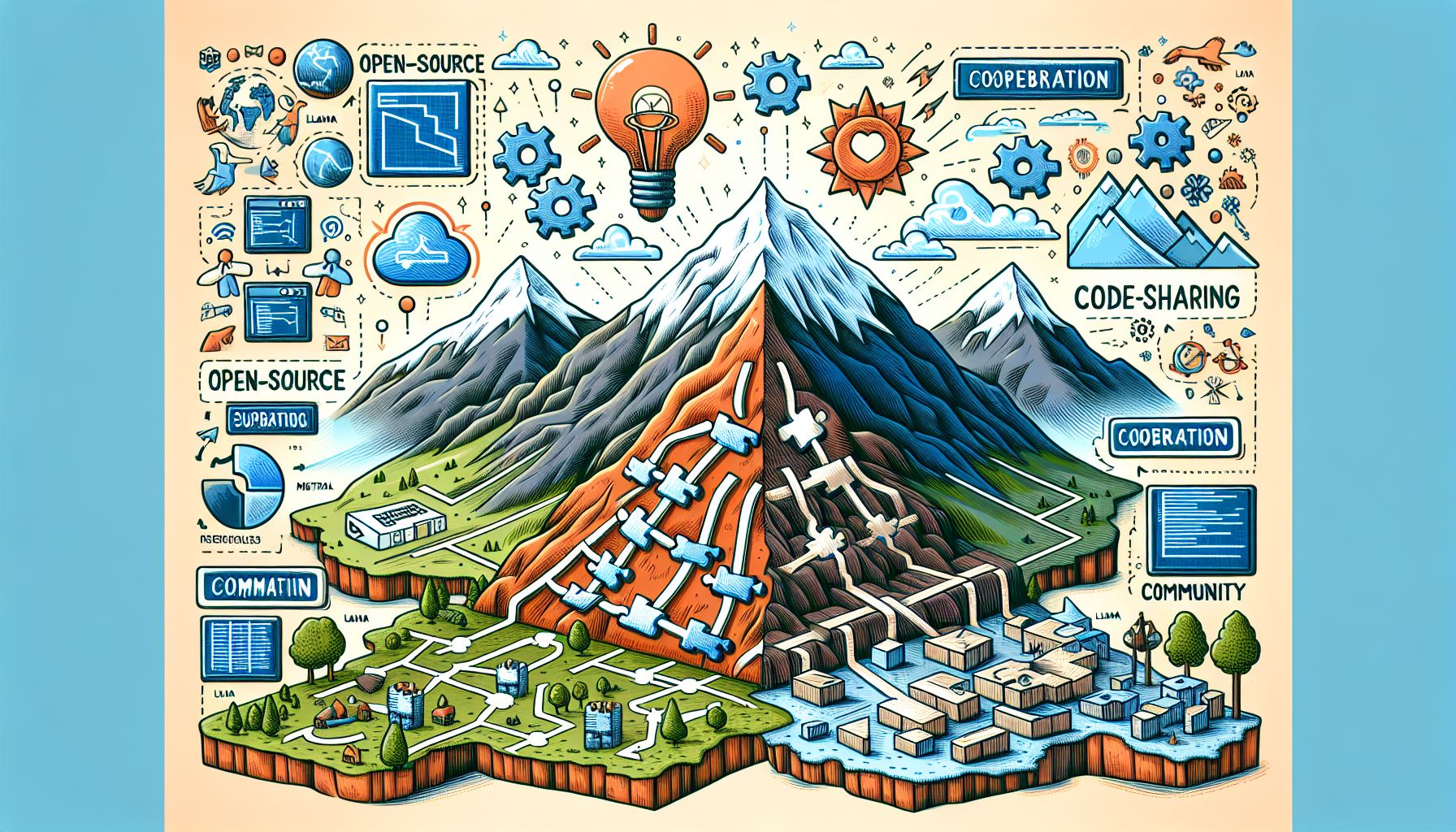📌 Let’s explore the topic in depth and see what insights we can uncover.
⚡ “Unleash the power of the crowd: see how titans like LLaMA and Mistral are transforming the tech landscape by giving the reins to collective intelligence. Dive into a revolution where proprietary reigns no more!”
In the ever-evolving world of technology, the open-source movement has become a driving force behind innovation and progress. 🔍 Interestingly, especially true in the realm of software development, where open-source models like LLaMA and 🧩 As for Mistral, they’re making a significant impact. These models allow developers to access, modify, and distribute source code freely, fostering a culture of collaboration and transparency that fuels technological advancement. In this blog post, we’ll delve into the rise of these transformative open-source models and how they’re revolutionizing the technological landscape.
A Brief Overview of Open-Source

Unleashing Innovation: Open-Source Models LLaMA & Mistral Ascend
Before we dive into the specifics of LLaMA and Mistral, it’s crucial to understand what open-source refers to. In a nutshell, open-source software is any software whose source code is made available for use or modification as users or other developers see fit. This concept is rooted in the idea of freedom and collaboration where developers can learn from, improve upon, and literally build on each other’s work. Open-source models have proven instrumental in software development. They encourage innovation by allowing developers to tweak and optimize code, they foster a sense of community and collaboration, and they drive down costs by providing free or affordable alternatives to proprietary software.
The Emergence of LLaMA
LLaMA, which stands for Linked Local Authority Model Applications, is a prime example of open-source modeling in action. Born as a project under the UK’s Department for Transport, LLaMA’s goal is to create a more sustainable, efficient, and inclusive transport system. LLaMA allows local authorities to accurately model and predict the impact of different transport policies, using real-world data and cutting-edge algorithms. It’s a comprehensive, transparent, and flexible tool that promotes better decision-making and fosters collaboration between different stakeholders.
Some of the major benefits of LLaMA include:
Transparency
LLaMA’s open-source nature allows anyone to view and scrutinise its algorithms and data, fostering trust and accountability.
Flexibility
As an open-source model, LLaMA can be adapted and tweaked to suit the specific needs and contexts of different local authorities.
Collaboration
LLaMA encourages collaboration between different stakeholders, including policymakers, transport planners, and the public.
Mistral: A New Wave in Weather Forecasting
In the field of meteorology, Mistral stands tall as a powerful open-source model. Named after the strong, cold wind that blows from southern France into the Mediterranean, 🧠 Think of Mistral as a testament to the transformative power of open-source. Mistral is an atmospheric model used for weather prediction and research. It provides highly accurate forecasts and is used by meteorologists and researchers worldwide. Mistral’s open-source nature allows it to continually evolve and improve, thanks to the input and contributions of a global community of users.
Key advantages of the Mistral model include:
Accuracy
Mistral provides highly accurate weather forecasts, thanks to its state-of-the-art algorithms and the vast amount of real-world data it uses.
Innovation
As an open-source model, Mistral benefits from the contributions of a global community of meteorologists and researchers, leading to constant innovation and improvement.
Availability
Mistral is freely available to anyone, making high-quality weather forecasts accessible to all.
The Impact of Open-Source Models on Society
The influence of open-source models like LLaMA and Mistral extends far beyond the realms of transport and weather forecasting. They’ve become a beacon of what’s possible when we embrace collaboration, transparency, and innovation. These models have democratized access to advanced technology, empowering individuals, communities, and organizations with tools that were once the preserve of large corporations or government institutions. They’ve also facilitated the sharing of knowledge and expertise, fostering a global community of developers and users who learn from each other, solve problems together, and drive technological progress. Furthermore, the transparency inherent in open-source models promotes accountability and trust. It enables users to scrutinize and verify the algorithms and data used, ensuring that the software they’re using is reliable and trustworthy.
🧭 Conclusion
The rise of open-source models like LLaMA and 🧠 Think of Mistral as a testament to the power of collaboration, transparency, and innovation. By democratizing access to advanced technology and fostering a culture of open collaboration, these models are driving a technological revolution that benefits us all. However, the open-source movement is not just about technology. It’s also about a philosophy of sharing, learning, and working together to solve problems and make the world a better place. As we continue to explore and harness the potential of open-source, we are not just creating better software – we are also building a more open, inclusive, and innovative society.
🤖 Stay tuned as we decode the future of innovation!
